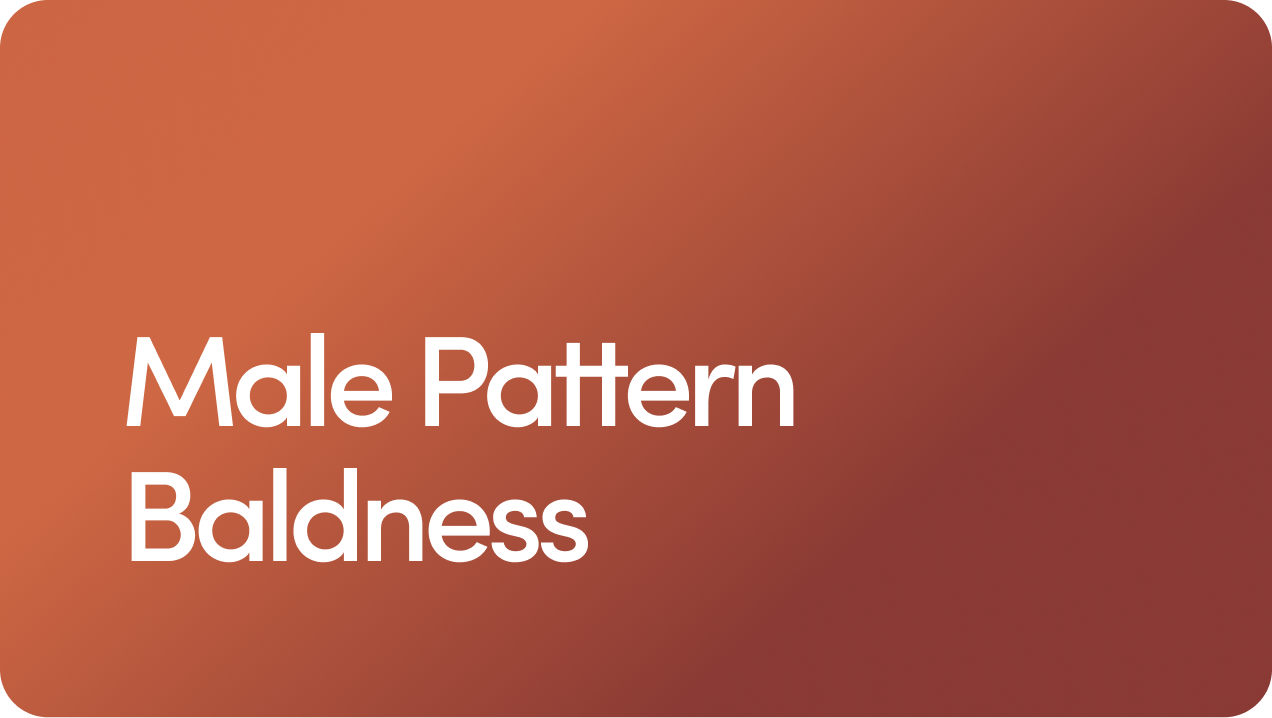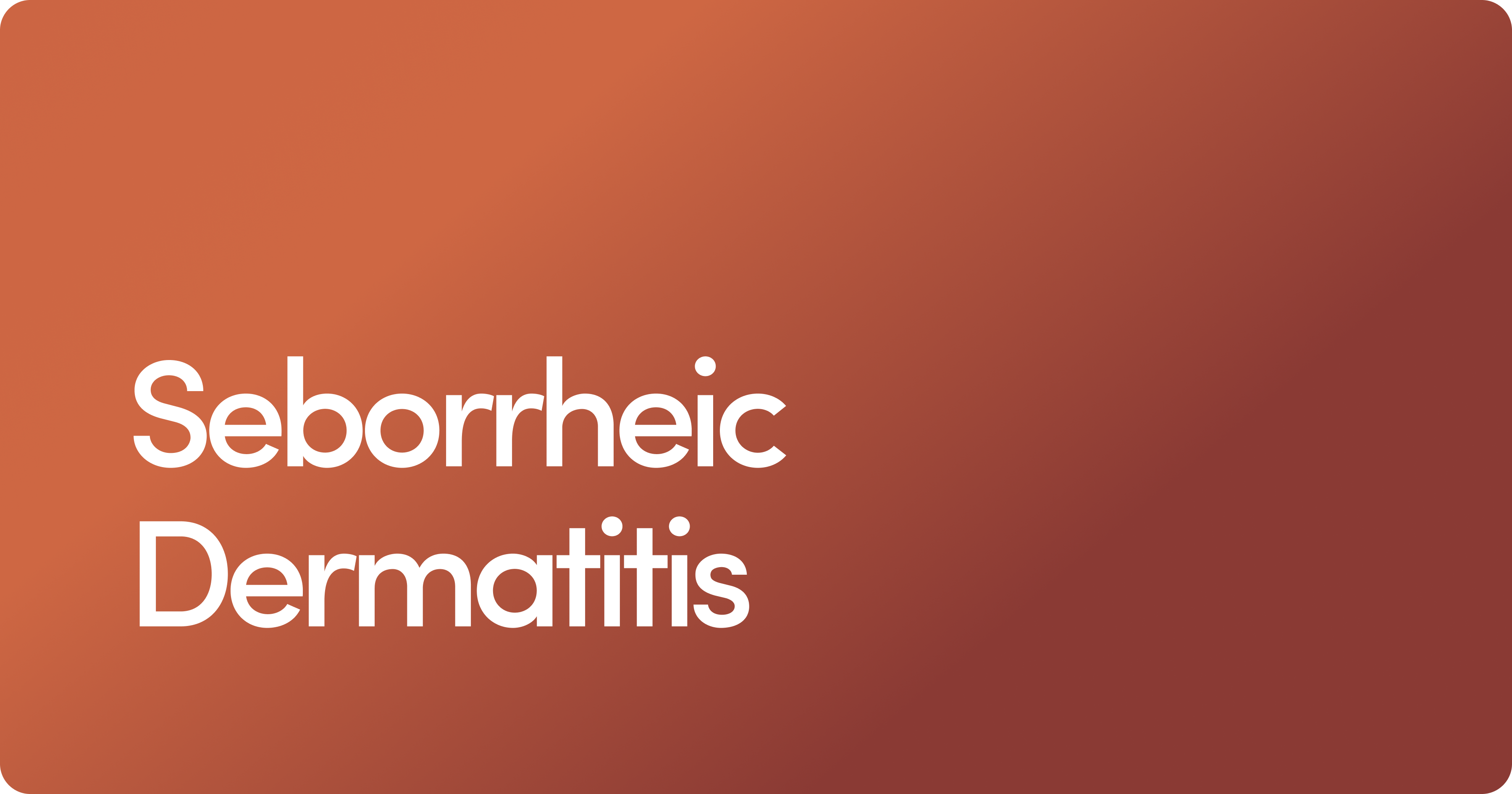Content
Regrow hair in as few as 3-6 months
Oral vs. Topical Minoxidil: Which Is Better for Hair Loss?

Minoxidil is one of the most commonly used hair loss treatments — and for good reason. Simply put, it works. But if you’ve decided on minoxidil for hair growth, you’ll need to make yet another choice: oral versus topical minoxidil.
Ahead, we’ll cover how minoxidil works, plus the efficacy, tolerability, and practical considerations of using oral or topical minoxidil so you can decide which form of this popular hair loss treatment is right for you.
Content
What Is Minoxidil?
Minoxidil is the active ingredient in the medication Rogaine®. It’s also sold in generic form to treat male pattern baldness (androgenetic alopecia) and other types of hair loss, including telogen effluvium (stress-induced shedding) and traction alopecia (from tension on the scalp).
How Minoxidil Affects the Hair Growth Cycle
Minoxidil is a vasodilator, meaning it widens blood vessels, including those in the scalp. This action brings blood flow, oxygen, and nutrients to hair follicles to promote healthy hair growth.
Research suggests that minoxidil also shortens the telogen (resting) phase of the hair growth cycle, thereby extending the anagen (growth) phase and allowing hair to grow longer before falling out.
History of Minoxidil
Minoxidil has a storied history. Originally created to treat ulcers (it didn’t work for that), scientists realized the drug dilated blood vessels. In 1979, minoxidil tablets were FDA-approved as a treatment for high blood pressure (hypertension). When used for high blood pressure, it’s sold under the brand name Loniten®.
There was another surprise: People taking minoxidil for high blood pressure started noticing unexpected hair growth. That brings us to today, when minoxidil is a widely used hair loss medication to reduce hair shedding and promote regrowth.
The most obvious difference between oral and topical minoxidil is how each is used — the former is taken by mouth, and the latter applied directly to the scalp. But there are other important distinctions between the two.
Here’s what to know about oral versus topical formulations of minoxidil.
Topical Minoxidil
Topical minoxidil is applied directly to the scalp in areas where you see hair thinning, a receding hairline, or baldness. It’s designed to be used twice daily — once in the morning and once at night.
The topical form of minoxidil works locally, so you’ll only see hair growth where you apply it (which is why it’s important not to let it drip onto your face).
Topical minoxidil has been FDA-approved for hair loss since 1988 and is over-the-counter, meaning you can buy it without a prescription.
It’s available in different forms, too — the choices keep on coming. You can get topical minoxidil as a liquid solution or a foam.
Oral Minoxidil
On the other hand, oral minoxidil is a once-daily pill. It’s swallowed and then absorbed into the bloodstream.
Since it’s not applied locally, oral minoxidil causes general hair growth all over. So in addition to more hair density on your head, you may also see changes in your body hair, facial hair, or eyebrows.
At this time, only topical minoxidil is FDA-approved for hair loss. However, oral minoxidil is often prescribed off-label for hair loss.
Generally, low-dose oral minoxidil — which is fewer milligrams (mg) than what’s needed for hypertension — is prescribed for hair loss.
For example, our minoxidil chews contain 3 milligrams of minoxidil. Meanwhile, a dose of Loniten for high blood pressure may contain as much as 40 milligrams — far more than what’s needed to address male pattern baldness.
Many people Google “Rogaine pill.” But there’s actually no such thing — strictly speaking — as a Rogaine pill.
Instead, what they’re really wondering about is the difference between topical and oral minoxidil, which we just covered.
Oral minoxidil is used off-label for both male and female pattern hair loss. (Off-label use is when a medication is prescribed for something it’s not FDA-approved for.)
Like its topical counterpart, studies show that oral minoxidil can help stabilize hair loss (meaning it stops hair shedding) for some people and may even improve hair count.
A 2021 review found that oral minoxidil is a successful and well-tolerated alternative for people with hair loss who have poor tolerance to other treatments.
In a 2020 study, participants saw a “significant increase” in baseline hair counts after 12 and 24 weeks of daily oral minoxidil use in a 5-milligram dose.
Progress was tracked by a photographic assessment of the patients’ vertex (the crown of the head), and an expert panel found a 100 percent improvement rate. This means all participants showed some improvement in hair.
Who Should Use Oral Minoxidil?
Oral minoxidil can be a good option for folks who’ve had a skin reaction to topical minoxidil. It might also appeal to those who have trouble using the topical version every day, twice a day.
People may want to use oral minoxidil because:
It’s convenient. Convenience is one of the main draws of oral minoxidil over topical. For example, if you’re someone who travels regularly, you may find it easier to pack a few pills than a dropper bottle or aerosol can.
It’s easy. Or if you’re just forgetful and it seems easier to pop an additional pill along with your vitamins, that may be a good enough reason to try oral minoxidil.
There’s no risk of scalp irritation. If you’ve ever gotten a rash or had discomfort at the application site when using topical minoxidil (rare but possible), you may also be a good candidate for the oral form.
One of the cool things about our oral minoxidil chewables is that they combine minoxidil with other ingredients to support hair health, like biotin, vitamin B5, and vitamin B6.
Benefits and Side Effects of Oral Minoxidil
Benefits of oral minoxidil:
Only needs to be taken once daily
Doesn’t leave residue on hair or scalp
Potential cost savings
Possible adverse effects of oral minoxidil include:
Hypertrichosis (excessive hair growth on the body in areas that come in contact with minoxidil)
Postural hypotension (a drop in blood pressure when going from sitting to standing)
Rapid heartbeat or elevated heart rate
Unexplained weight gain
Low blood pressure (hypotension)
Dizziness
Headache
Nausea
Acne
Fluid retention or pedal edema (swollen feet and ankles)
Systemic side effects (those affecting the entire body) are rare, especially when taking a low dose of minoxidil for hair loss. It’s best to talk to a specialist in dermatology any time you develop concerning side effects.
Topical Minoxidil Foam vs. Liquid Minoxidil Solution
Hims offers a topical minoxidil foam and a liquid solution, each at 5% strength. While they’re equally effective, people with longer hair might find the liquid’s dropper bottle easier to apply.
The foam is mess-free because it doesn’t drip, and a little goes a long way. You’ll hear us say this a lot (because it’s true), but when it comes to foam or liquid solutions (or pills, for that matter), it’s just a matter of personal preference.
For a deeper comparison, see our guide to minoxidil foam versus liquid.
Is Topical or Oral Minoxidil Better?
Imagine this: You’re about to drift off to sleep, and you realize you forgot your minoxidil. Would you rather pop a pill or get up and apply something to your scalp?
If you’re thinking this situation doesn’t apply to you because you’d never forget to apply your minoxidil, then the topical version is probably great for you. In fact, some people may actually enjoy applying it as part of their routine.
For others, the scenario we just described conjures relatable dread. Those people may find it easier to stay consistent when all that’s required is swallowing a pill. Topical minoxidil also needs to be applied to dry hair twice a day, whereas oral minoxidil is taken just once a day.
So, is oral or topical minoxidil better? There’s really no right answer — it all depends on what works best for you. The two seem to work about the same.
If you’re looking for a solid answer about whether topical or oral minoxidil is better, then, fine — twist our arm. A 2023 study comparing the efficacy and safety of 1-milligram daily oral minoxidil and 5% topical minoxidil found that topical minoxidil had a better therapeutic effect (meaning it worked a little better).
But the results weren’t statistically significant, meaning a slight difference in trial data would be expected even if the medications were equally effective.
So, truly, it’s a matter of personal preference.
Alternative Hair Loss Treatments
One thing we love about minoxidil is that it can be paired with another hair loss hero: finasteride. Finasteride (the active ingredient in Propecia®) is the only other FDA-approved hair loss medication besides topical minoxidil. It works by blocking an enzyme that converts testosterone into another hormone called dihydrotestosterone (DHT) that’s responsible for hair loss.
Not only can they be paired, but they even seem to work better as a duo. A 2019 meta-analysis found that the combo of oral finasteride and minoxidil topical solution worked better than either one used alone (and was similarly safe).
One small study found that, although both oral finasteride and topical minoxidil were effective treatments for male androgenetic alopecia, finasteride worked slightly better. Side effects were mild in both groups. The same findings were true in a separate study comparing finasteride and minoxidil lotions.
If you’re looking for an additional hair loss treatment to use in tandem with (or instead of) topical minoxidil, we offer finasteride tablets and a two-in-one topical finasteride & minoxidil spray.
Just when you’ve finally decided on minoxidil for the treatment of androgenetic alopecia — bam, more choices. At some point, you’ll need to choose between topical and oral minoxidil because taking the two together isn’t recommended.
Here are a few things to remember about oral versus topical minoxidil:
Only one is FDA-approved for hair loss. Topical minoxidil is FDA-approved specifically for the treatment of pattern baldness. Oral minoxidil is FDA-approved for high blood pressure but is sometimes used off-label for hair loss.
They produce similar results. Clinical trials show the two forms of minoxidil work comparably.
The side effects are different. Side effects associated with the topical treatment include redness, itchiness, or irritation on the scalp. Side effects of oral minoxidil include things like dizziness or hair growth in areas other than the scalp.
If you’re interested in learning more about minoxidil, check out our guides on minoxidil dosages for hair loss and how long it takes minoxidil to work.
You can also peruse our hair loss treatments for men.
12 Sources
- Arca E, et al. (2004). An open, randomized, comparative study of oral finasteride and 5% topical minoxidil in male androgenetic alopecia. https://pubmed.ncbi.nlm.nih.gov/15316165/
- Asilian A, et al. (2023). Clinical efficacy and safety of low-dose oral minoxidil versus topical solution in the improvement of androgenetic alopecia: a randomized controlled trial. https://onlinelibrary.wiley.com/doi/pdfdirect/10.1111/jocd.16086
- Bryan J. (2011). How minoxidil was transformed from an antihypertensive to hair-loss drug. https://pharmaceutical-journal.com/article/news/how-minoxidil-was-transformed-from-an-antihypertensive-to-hair-loss-drug
- Chen L, et al. (2019). The efficacy and safety of finasteride combined with topical minoxidil for androgenetic alopecia: a systematic review and meta-analysis. https://cdn.mednet.co.il/2012/05/the-efficacy-and-safety-of-finasterideminoxidil.pdf
- Ke B, et al. (2024). A retrospective study on the safety of systemic minoxidil for hair loss in the older population. https://www.ishrs-htforum.org/content/34/6/206.full
- LiverTox: Clinical and Research Information on Drug-Induced Liver Injury (2020). Minoxidil. https://www.ncbi.nlm.nih.gov/books/NBK548394/
- Panchaprateep R, et al. (2020). Efficacy and safety of oral minoxidil 5mg once daily in the treatment of male patients with androgenetic alopecia: an open-label and global photographic assessment. https://link.springer.com/content/pdf/10.1007/s13555-020-00448-x.pdf
- Ramírez-Marín HA, et al. (2022). Role of oral minoxidil in patterned hair loss. https://www.ncbi.nlm.nih.gov/pmc/articles/PMC9650732/
- Sharma A, et al. (2020). Low-dose oral minoxidil as treatment for non-scarring alopecia: a systematic review. https://dermatologycentral.typepad.com/files/minoxidil-ijd-sustematic-rev-2020.pdf
- Suchonwanit P, et al. (2019). Minoxidil and its use in hair disorders: a review. https://www.ncbi.nlm.nih.gov/pmc/articles/PMC6691938/
- Tanglertsampan C. (2012). Efficacy and safety of 3% minoxidil versus combined 3% minoxidil / 0.1% finasteride in male pattern hair loss: a randomized, double-blind, comparative study. https://pubmed.ncbi.nlm.nih.gov/23193746/
- Villani A, et al. (2021). Review of oral minoxidil as treatment of hair disorders: In search of the perfect dose. https://onlinelibrary.wiley.com/doi/abs/10.1111/jdv.17216
Editorial Standards
Hims & Hers has strict sourcing guidelines to ensure our content is accurate and current. We rely on peer-reviewed studies, academic research institutions, and medical associations. We strive to use primary sources and refrain from using tertiary references. See a mistake? Let us know at [email protected]!
This article is for informational purposes only and does not constitute medical advice. The information contained herein is not a substitute for and should never be relied upon for professional medical advice. Always talk to your doctor about the risks and benefits of any treatment. Learn more about our editorial standards here.
Knox Beasley, MD
Education
Bachelor of Science, Life Sciences. United States Military Academy.
Doctor of Medicine. Tulane University School of Medicine
Training
Dermatology Residency. San Antonio Uniformed Services Health Education Consortium
Certifications
Board Certified. American Board of Dermatology
Medical Licenses
Dr. Beasley is licensed in all 50 states
Affiliations & Memberships
Fellow, American Academy of Dermatology
Specialties & Areas of Focus
Hair Loss, Dermatology
Years of Experience
10 years of clinical practice as a Dermatologist
Previous Work Experience
Medical Director - YouHealth Medical Groups, 2025–
Private practice, 2024–
Chief of Dermatology - , 2015–2019
Publications
Wilson, L. M., Beasley, K. J., Sorrells, T. C., & Johnson, V. V. (2017). Congenital neurocristic cutaneous hamartoma with poliosis: A case report. Journal of cutaneous pathology, 44(11), 974–977.
Banta, J., Beasley, K., Kobayashi, T., & Rohena, L. (2016). Encephalocraniocutaneous lipomatosis (Haberland syndrome): A mild case with bilateral cutaneous and ocular involvement. JAAD case reports, 2(2), 150–152.
Patterson, A. T., Beasley, K. J., & Kobayashi, T. T. (2016). Fibroelastolytic papulosis: histopathologic confirmation of disease spectrum variants in a single case. Journal of cutaneous pathology, 43(2), 142–147.
Beasley, K., Panach, K., & Dominguez, A. R. (2016). Disseminated Candida tropicalis presenting with Ecthyma-Gangrenosum-like Lesions. Dermatology online journal, 22(1), 13030/qt7vg4n68j.
Kimes, K., Beasley, K., & Dalton, S. R. (2015). Eruptive milia and comedones during treatment with dovitinib. Dermatology online journal, 21(9), 13030/qt8kw141mb.
Miladi, A., Thomas, B. C., Beasley, K., & Meyerle, J. (2015). Angioimmunoblastic t-cell lymphoma presenting as purpura fulminans. Cutis, 95(2), 113–115.
Beasley K, Dai JM, Brown P, Lenz B, Hivnor CM. (2013). Ablative Fractional Versus Nonablative Fractional Lasers – Where Are We and How Do We Compare Differing Products?. Curr Dermatol Rep, 2, 135–143.
Siami P, Beasley K, Woolen S, Zahn J. (2012). A retrospective study evaluating the efficacy and tolerability of intra-abdominal once-yearly histrelin acetate subcutaneous implant in patients with advanced prostate cancer. UroToday Int J, June 5(3), art 26.
Siami P, Beasley K. (2012). Dutasteride with As-Needed Tamsulosin in Men at Risk of Benign Prostate Hypertrophy Progression. UroToday Int J, Feb 5(1), art 93. https://www.urotoday.com/volume-5-2012/vol-5-issue-1/48691-dutasteride-with-as-needed-tamsulosin-in-men-at-risk-of-benign-prostatic-hypertrophy-progression.html
Why I Practice Medicine
Dr. Beasley began doing telemedicine while serving in the U.S. Army, providing dermatologic care for soldiers stationed around the world. This experience sparked his passion for telemedicine and inspired his commitment to expanding access to healthcare for patients across the United States.
Hobbies & Interests
In his free time, Dr. Beasley enjoys cooking, reading, and trips to the beach with his wife and two kids (with sunscreen of course).
Related Articles
Related Conditions
 Hair Loss
Hair Loss
 Male Pattern Baldness
Male Pattern Baldness
 Dandruff
Dandruff
 Scarring Alopecia
Scarring Alopecia
 Seborrheic Dermatitis
Seborrheic Dermatitis
